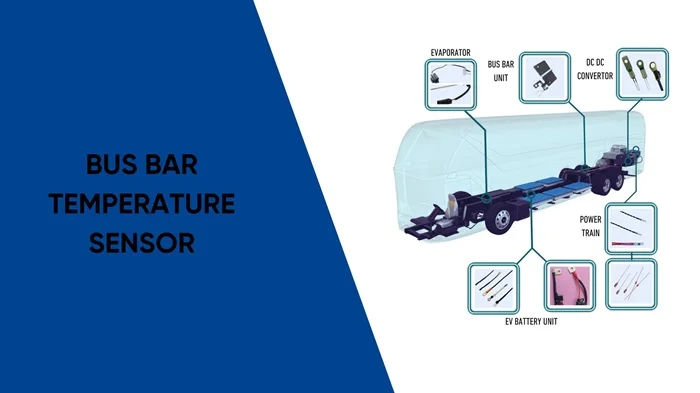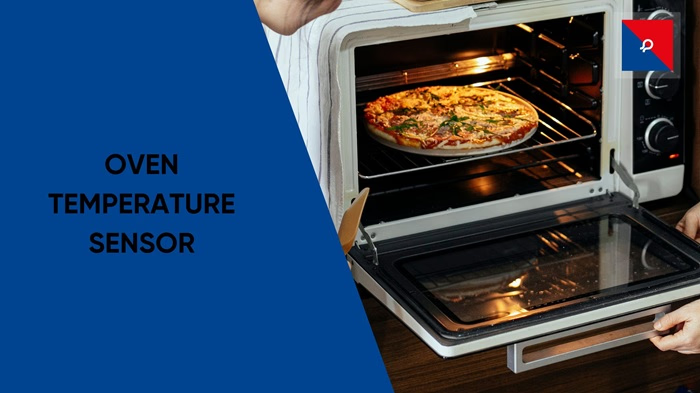
The Impact of Temperature Sensors on Indoor Air Quality in HVAC Systems
The Impact of Temperature Sensors on Indoor Air Quality in HVAC Systems

Indoor air quality (IAQ) is a crucial aspect of maintaining a healthy and comfortable living environment. Poor IAQ can lead to a range of health problems, including allergies, respiratory issues, and even long-term chronic diseases. One of the critical components that influence IAQ in Heating, Ventilation, and Air Conditioning (HVAC) systems is temperature sensors. These sensors play a vital role in regulating and monitoring the air quality within indoor spaces. This blog will delve into the impact of these sensors on IAQ in HVAC systems, exploring their functions, benefits, and future potential.
Understanding Temperature Sensors in HVAC Systems
Temperature sensors are devices that measure the temperature of the air in a given space and send this information to the HVAC system. When purchasing a temperature sensor online, it’s important to consider factors such as accuracy, response time, and compatibility with existing HVAC systems. They come in various forms, such as thermistors, thermocouples, and infrared sensors, each suited for different applications and accuracy requirements. These are strategically placed to monitor both the ambient air temperature and the temperature of air flowing through ducts and vents.
The Role of Temperature Sensors in Regulating Indoor Air Quality
- Maintaining Optimal Temperature: The primary function of temperature sensors is to maintain the temperature set by occupants, which is crucial for good IAQ. Extreme temperatures can lead to mold, mildew, and condensation. By keeping indoor temperatures comfortable, HVAC temperature sensors help prevent these issues and promote healthier air quality.
- Enhancing Ventilation Efficiency: Temperature sensors, along with humidity sensors and air quality monitors, optimize ventilation by detecting heat buildup and signaling the system to increase airflow. This ensures pollutants are diluted, and stale air is replaced with fresh outdoor air, maintaining cleaner indoor air.
- Energy Efficiency and IAQ: Efficient energy use reduces operational costs and improves IAQ. HVAC temperature sensors enhance energy efficiency by preventing overcooling or overheating, maintaining a consistent temperature. This reduces excessive energy consumption and lowers emissions from power plants, benefiting both indoor and outdoor air quality.
The Benefits of Advanced Temperature Sensors
- Precision and Accuracy: Modern temperature sensors provide high precision and accuracy, enabling HVAC systems to respond promptly to temperature changes. This responsiveness is crucial for maintaining stable indoor conditions and directly impacts IAQ. Precise control also manages humidity levels, preventing the growth of allergens in high humidity and avoiding dry air that can affect respiratory health.
- Integration with Smart Technology: The rise of smart technology has transformed HVAC temperature sensors. Smart thermostats and home automation systems utilize precise temperature readings for instant adjustments, learning user habits to optimize indoor climate. Integrated with smart technology, temperature sensors enable proactive IAQ management, swiftly adapting to changes for a consistently healthy environment.
- Remote Monitoring and Control: Advanced temperature sensors facilitate remote monitoring and control of HVAC systems, providing facility managers and homeowners with real-time indoor data accessible via smartphones or computers. This capability is crucial for promptly identifying and addressing IAQ issues. For example, if a sensor detects a sudden temperature spike, it could signal equipment malfunction or unexpected occupancy, prompting immediate corrective measures.
Future Potential and Innovations
The future of temperature sensors in HVAC systems holds exciting possibilities, particularly with the ongoing advancements in sensor technology and artificial intelligence (AI). Some potential developments include:
- AI-Powered Predictive Maintenance: AI algorithms can analyze data from temperature sensors to predict potential HVAC system failures before they occur. Predictive maintenance ensures that the system operates efficiently, minimizing downtime and maintaining optimal IAQ. For example, a temperature sensor detecting a gradual increase in system temperature might indicate a blockage or mechanical issue that needs addressing.
- Enhanced Sensor Networks: The advancement of interconnected sensor networks enables thorough indoor environment monitoring, offering detailed temperature insights across various zones. This allows for precise IAQ control, ensuring adequate ventilation and conditioning in every area, even in large buildings.
- Integration with Renewable Energy Systems: As the world moves towards sustainable energy solutions, temperature sensors can play a role in integrating HVAC systems with renewable energy sources like solar or geothermal power. These integrations can optimize the use of natural resources for heating and cooling, further enhancing IAQ while reducing environmental impact.
Conclusion
Temperature sensors are key to healthy air! They precisely monitor HVAC systems, ensuring optimal comfort and air quality. As technology advances, these sensors will become even more crucial, offering smarter ways to improve air quality and predict maintenance needs. For anyone considering an upgrade to their HVAC system, exploring the options for HVAC temperature sensor online can be a valuable step. With the right sensors, your system can achieve optimal performance, ensuring that indoor air quality remains high and energy costs remain low. Considering an upgrade? Explore JR Sensors! They offer a wide range of temperature sensor solutions specifically designed for HVAC applications. Find the perfect fit for your needs and create a healthier, more efficient indoor environment.

Busbar Watchdogs: The Tiny Sensors Preventing Massive Power Failures
Think of them as your system’s early warning system. Busbar temperature sensors silently protect power grids, data centers, and switchboards from overheating, fire, and failure. Discover why this small sensor plays a big role in electrical safety and uptime.

Beyond Specs: 5 Must-Know Factors When Choosing a Thermistor Sensor Manufacturer
Not all thermistor manufacturers are created equal. Whether you're building a medical device or a smart appliance, this guide breaks down the 5 key factors that ensure you get precision, reliability, and peace of mind.

Burnt Biscuits? Blame the Sensor – The Hot Truth About Your Oven’s Temperature Troubles
If your oven’s cooking like it’s got a mind of its own, your temperature sensor might be the silent saboteur. From half-baked casseroles to scorched cookies, we break down how this little sensor works, why it matters, and how to fix it—without losing your cool (or your dinner). A fun, practical guide that’s just as useful as it is digestible.